That’s a tarantula hawk feeding on a flower of my Edranol avocado tree. I watched it work that tree for five minutes, then fly to a Fuerte twenty feet away, and then come back to visit the Edranol flowers again. Ten minutes later, I found the tarantula hawk crawling on the flowers of my Pinkerton.
That’s a lot of potential pollination and cross pollination. From a tarantula hawk!
(What’s a tarantula hawk? Pepsis thisbe is its scientific name. It’s classified as a type of wasp, and the females are said to hunt tarantulas and paralyze them in order to lay their eggs inside. The females also are said to have very painful stings. I wouldn’t know.)
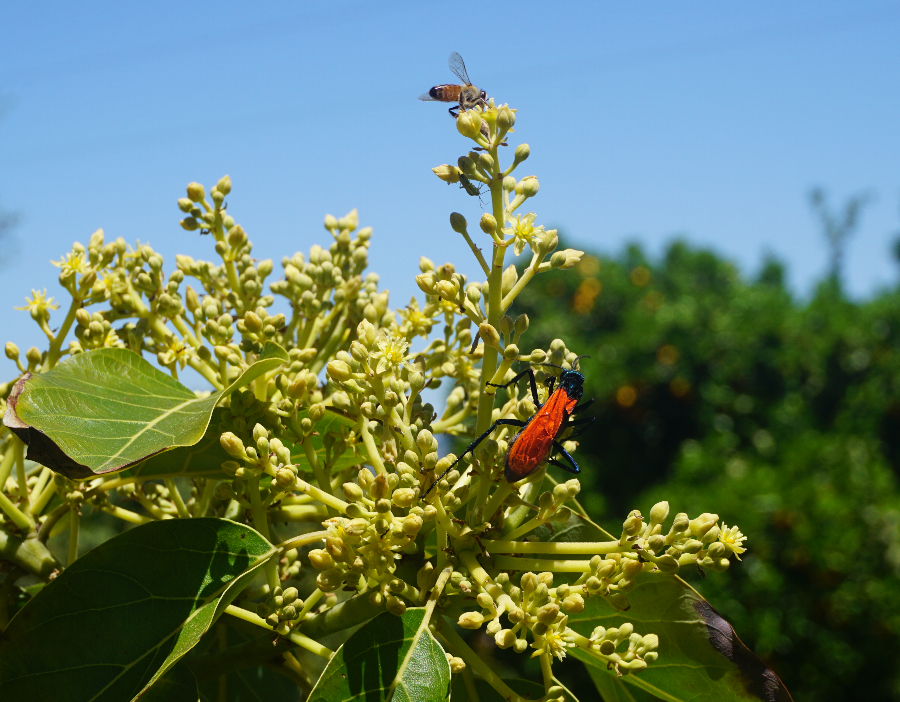
Most of us think of honey bees when we think of who pollinates avocado flowers. But there are myriad other bees, flies, wasps, beetles, and even butterflies that feed on the flowers of avocado trees and potentially pollinate them.
Over the past few months, I have been standing before my avocado trees with my camera and trying to capture the visitors to their flowers. Here are some of the characters I’ve caught:
Bees


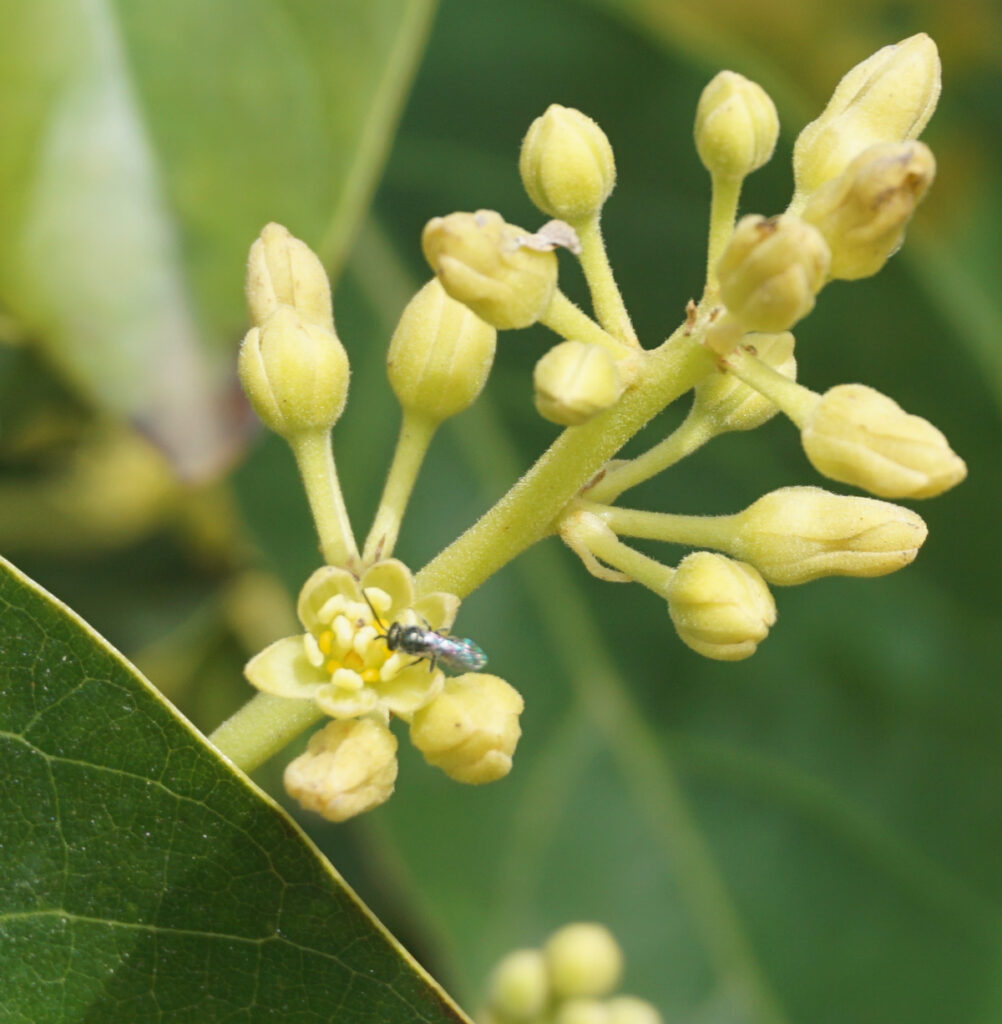
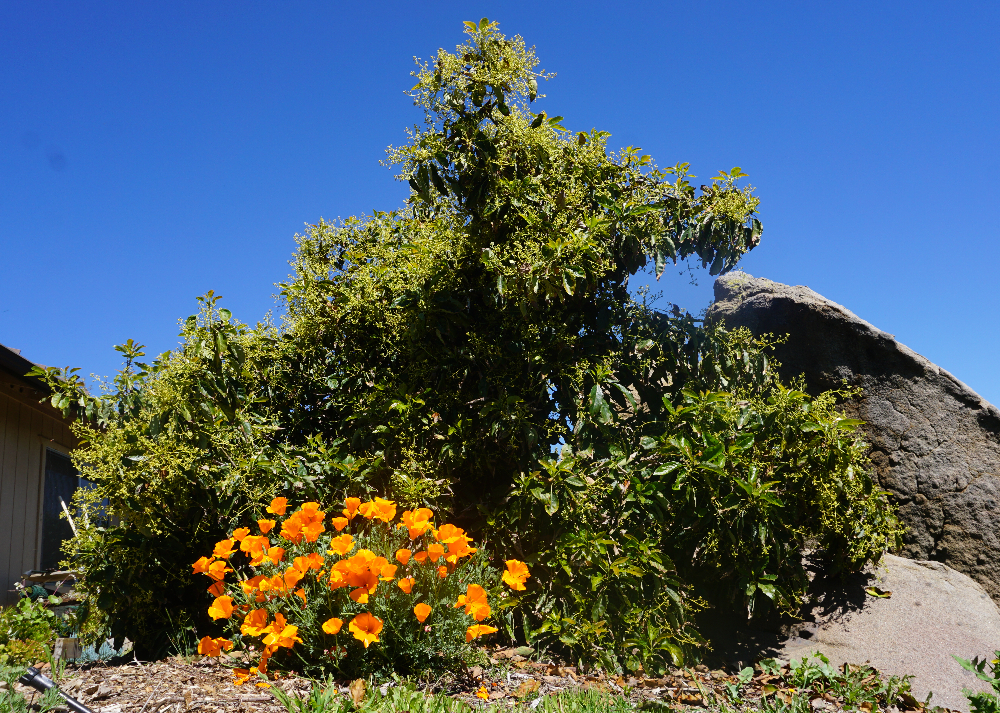
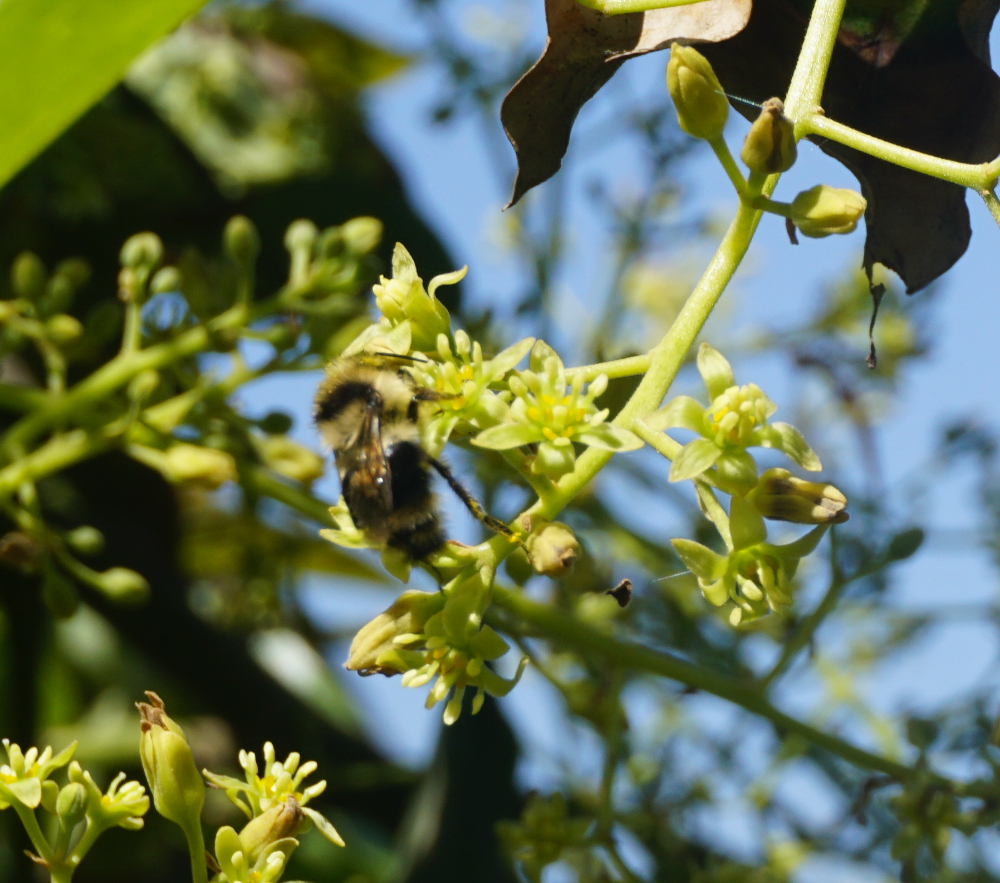
Flies
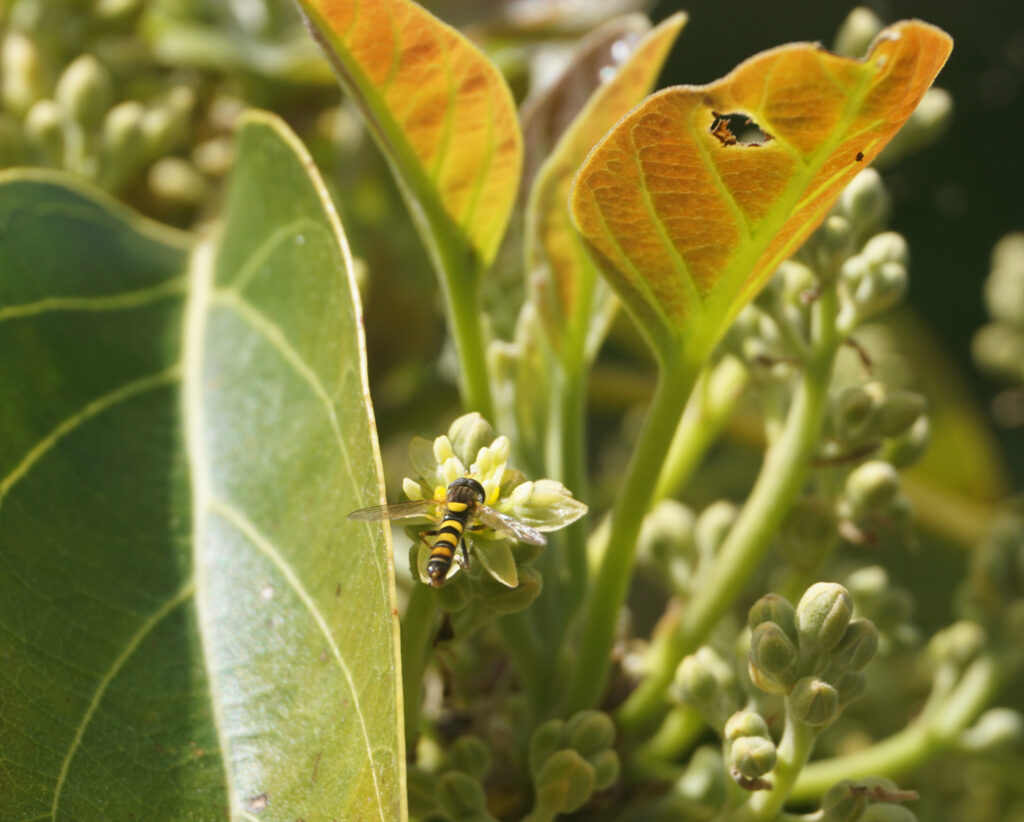

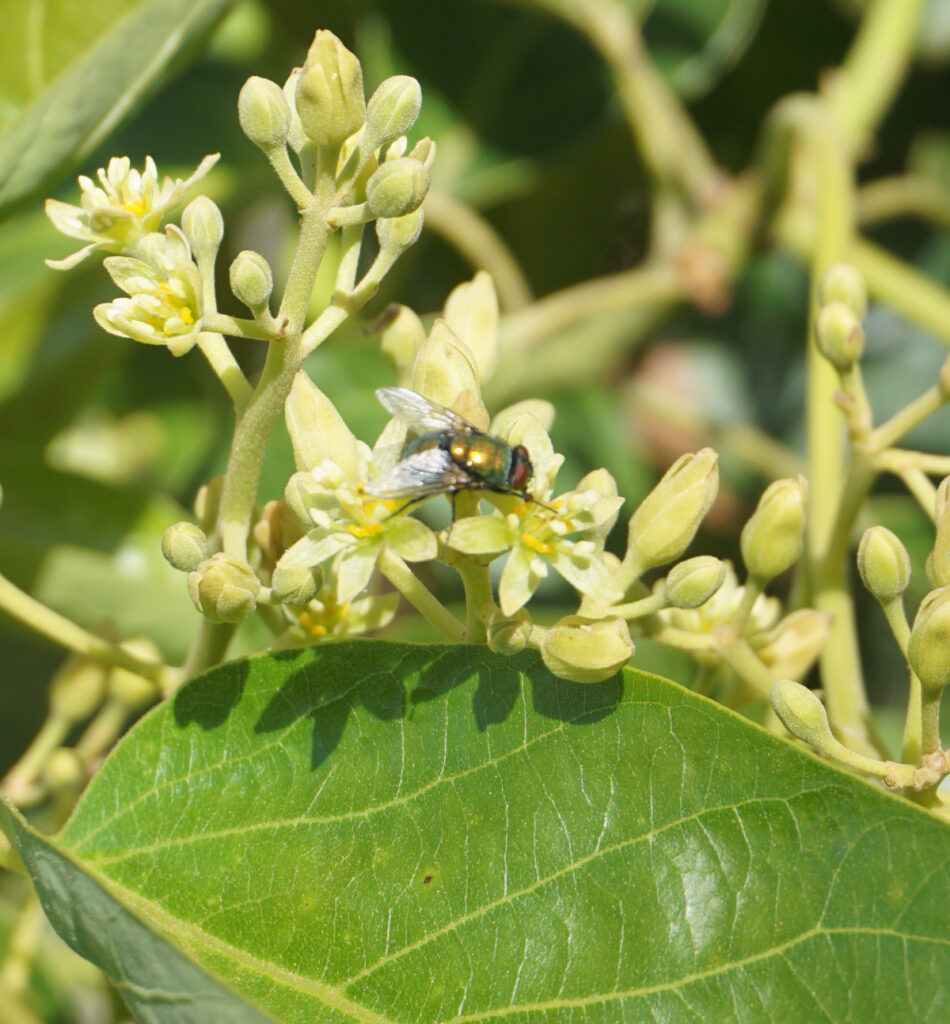
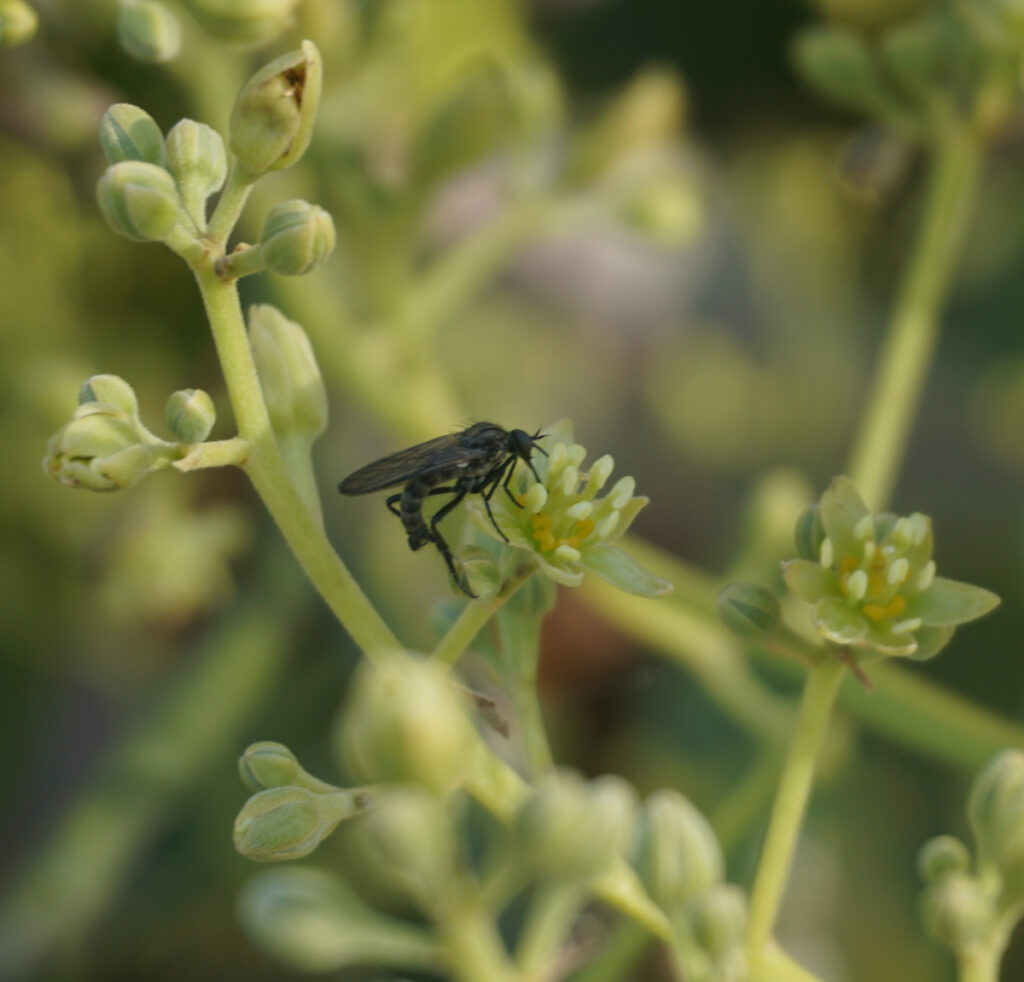
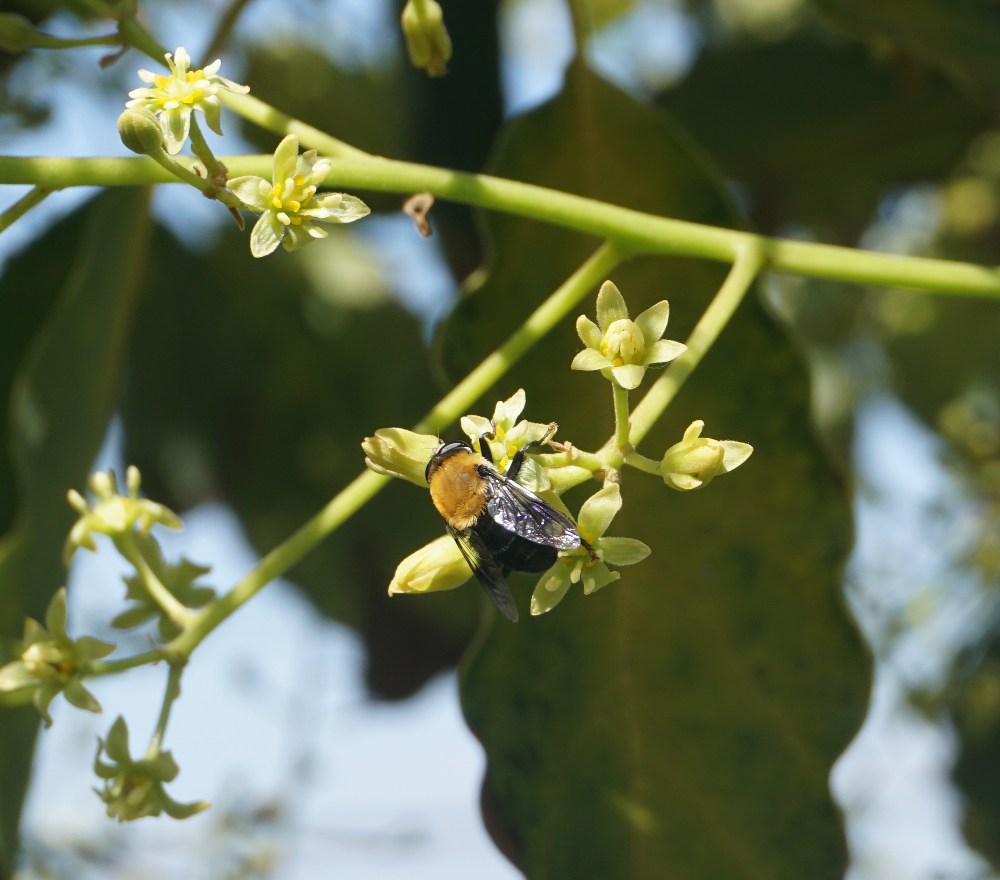
Beetles
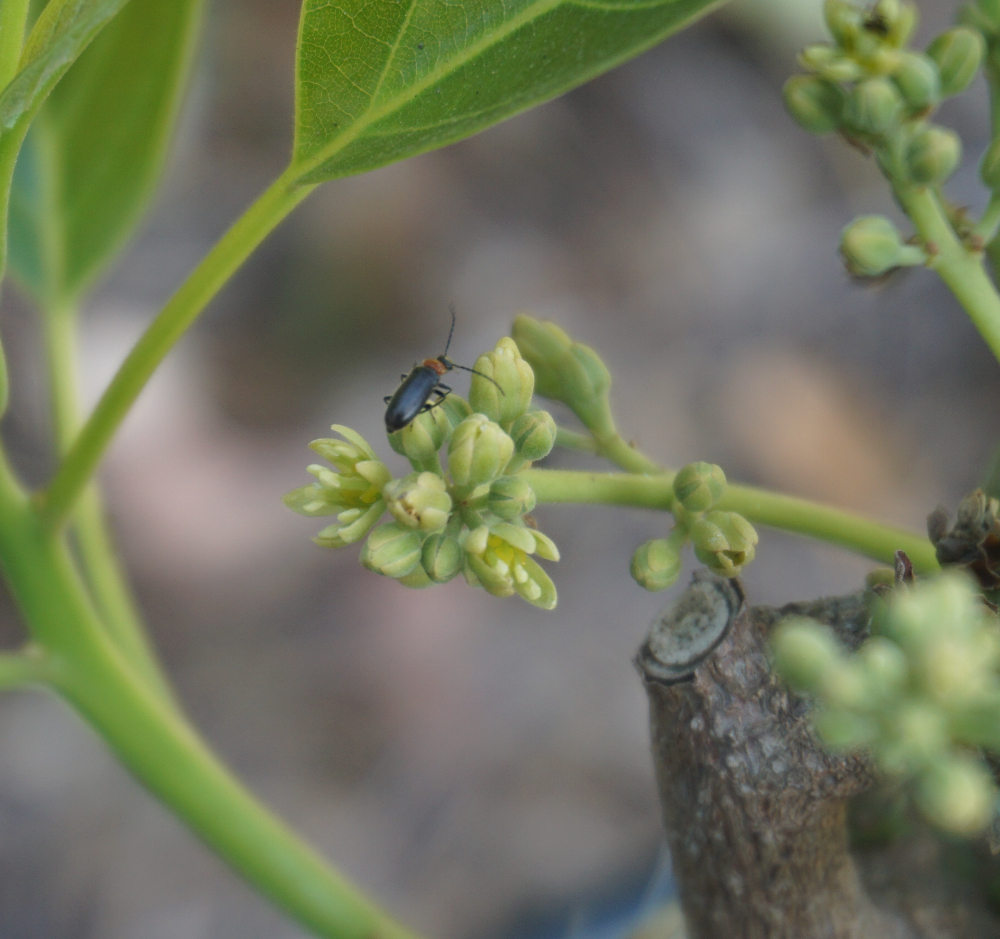
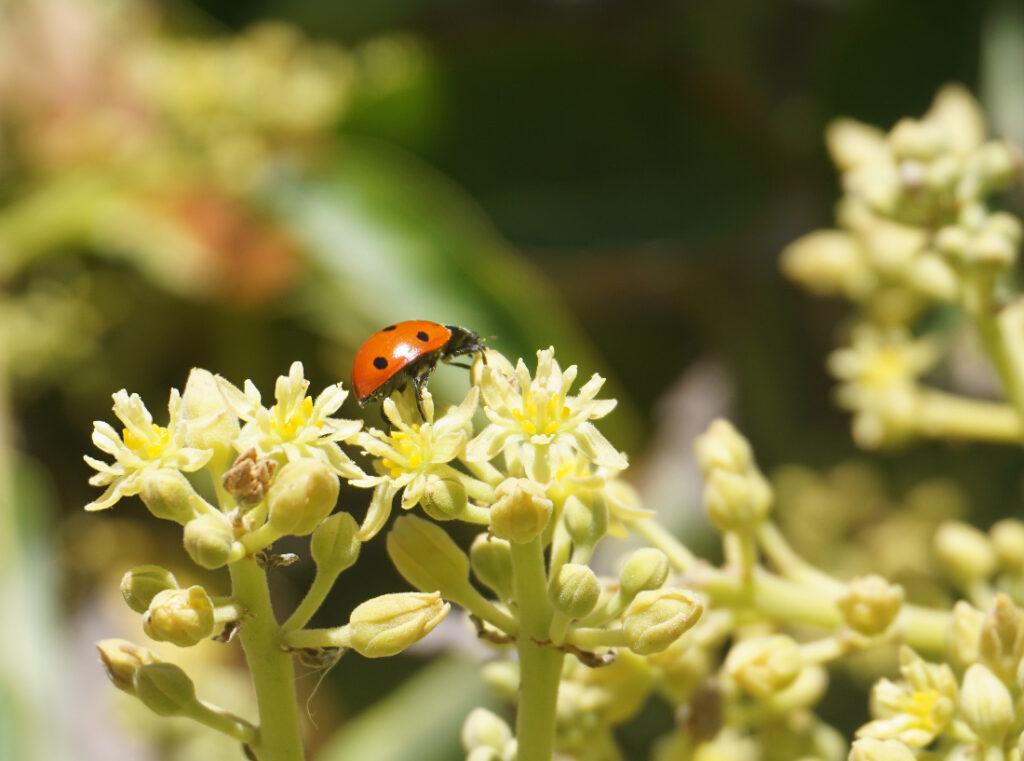
Butterflies
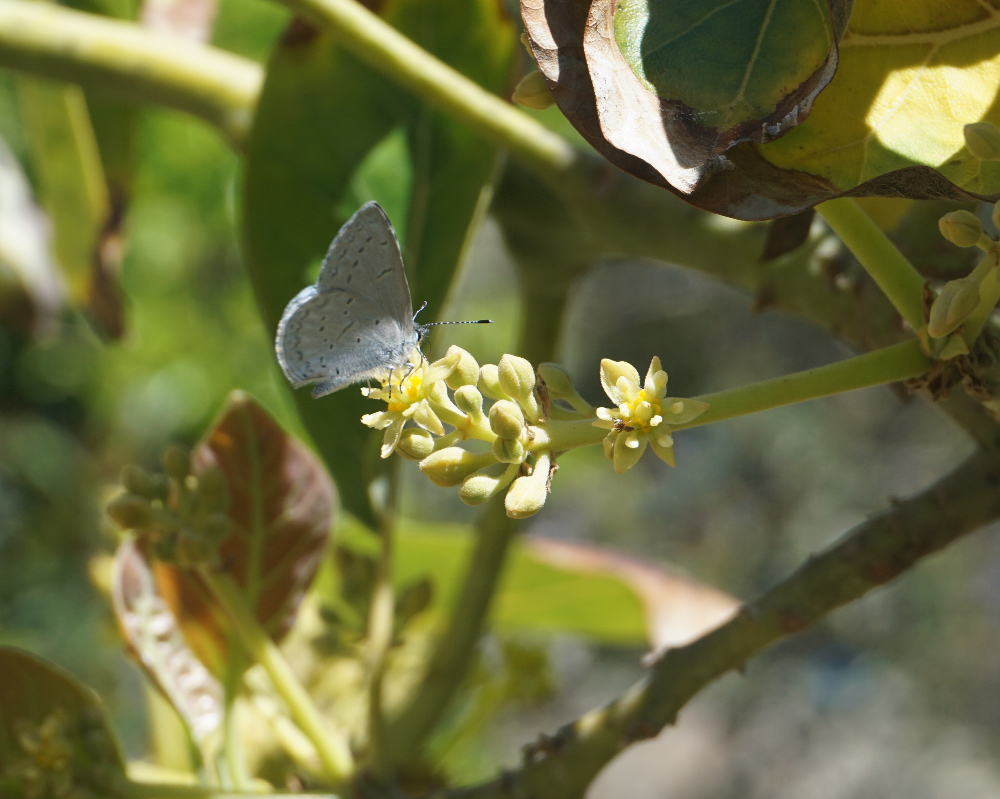
But who pollinates avocado flowers?
I saw many other critters on the avocado flowers in my yard this spring that I wasn’t able to capture. Are all of these visitors pollinating the avocado flowers though? Just because they land on a flower doesn’t mean they pollinate, right?
For pollination of an avocado flower, it’s necessary for pollen from a male flower to stick to the body of a creature that afterward visits a female flower where the pollen is deposited.
So a creature crawling on avocado flowers does not necessarily lead to pollination.
Ants crawl on avocado flowers but researchers don’t think they pollinate much. One reason is that pollen does not stick well to their relatively hairless bodies. In general, the more hair an insect has, the higher its potential to be a pollinator because pollen sticks to the hair.
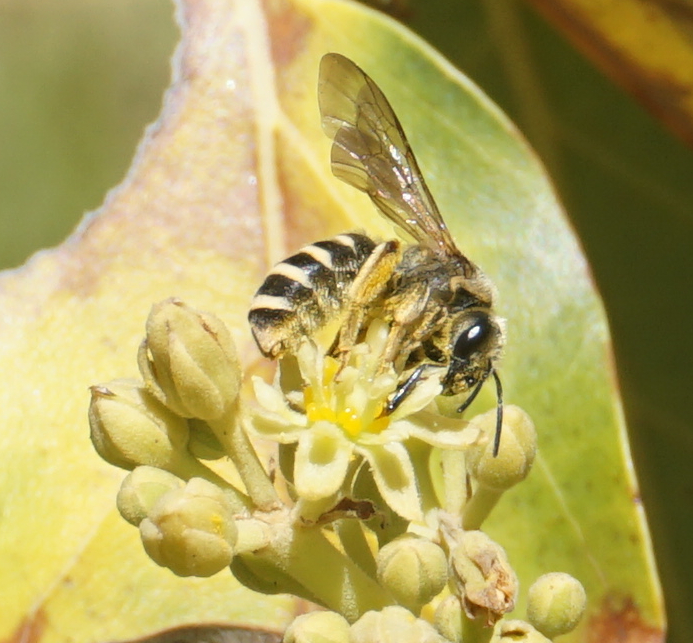
(By the way, unfortunately, mere wind can’t pollinate avocado flowers. Some kind of insect is required to move the pollen between flowers. This has been demonstrated in many experiments. For example, Lesley and Bringhurst of UCLA wrote in the 1951 California Avocado Society Yearbook: “At Los Angeles no fruits set on trees of 15 varieties where large flying insects were excluded by cloth bags or screen cages . . .”)
Native pollinators
If we think for just a second, we say, “Of course honey bees aren’t the only pollinators of avocado flowers.” Avocado trees originate in the Americas whereas honey bees originate in Europe. Someone else must have been pollinating avocado flowers before honey bees met avocados.
Some researchers have studied the insects beyond honey bees that pollinate avocado flowers, and some are still learning more about this today:
- Gad Ish-Am and colleagues compiled a lot of research in “Pollinators of Avocado” that summarizes studies done around the world.
- There is an ongoing study, started in 2014 by Ben Faber and Gordon Frankie and colleagues, of native pollinators of avocado flowers in Ventura and Santa Barbara Counties.
My experience and observations in spring 2023
Last spring, 2023, was a worrisome time because the weather was often cool and rainy, and every time I would look at the flowers on my avocado trees I would see a few flies and native bees but almost never a honey bee. The trees were having a superbloom, but the honey bees, the most famous pollinators, were nowhere to be found. Will there be any pollination?
Come summer, however, I saw an abundance of fruit developing on most of my trees and I thought, “If it wasn’t the honey bees, then who was it?” Must have been the flies and native bees that pollinated.
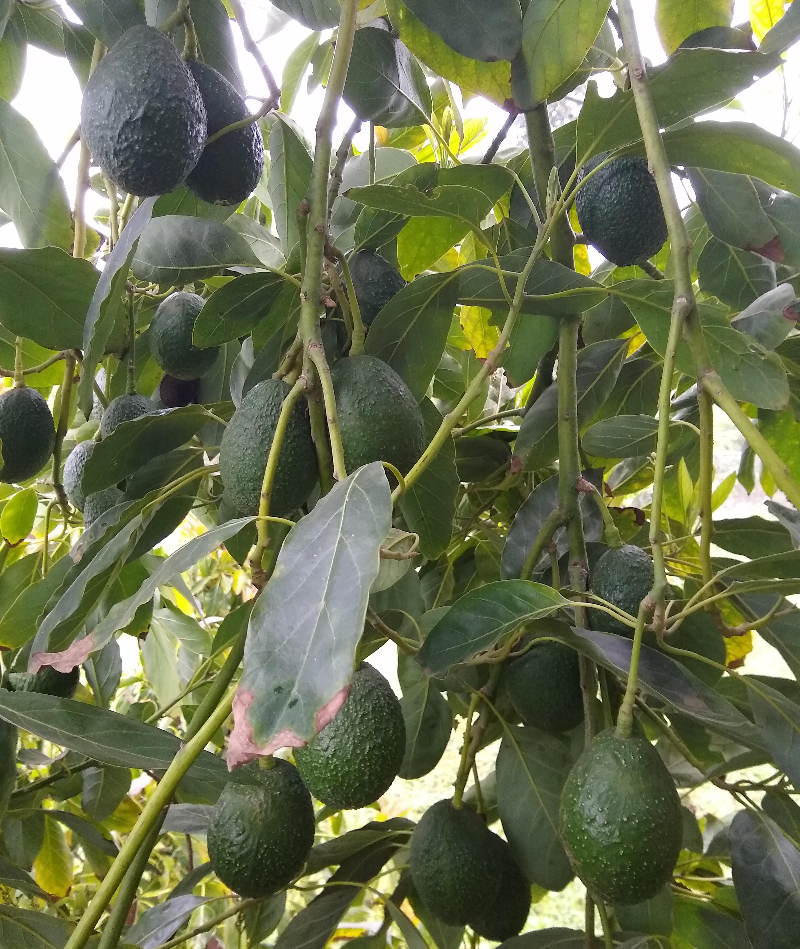
In contrast, I visited some farms that also had lots of flowers but low fruitset in spring 2023. It was blamed on the cool weather. I suspect the blame should partly be placed on reliance on honey bees. Most avocado farms rent hives of honey bees during bloom time in order to accomplish pollination but do not cultivate habitat for native pollinators.
Want to increase avocado pollinators?
Grow flowers near your avocado trees so that pollinators have a reason to live there.
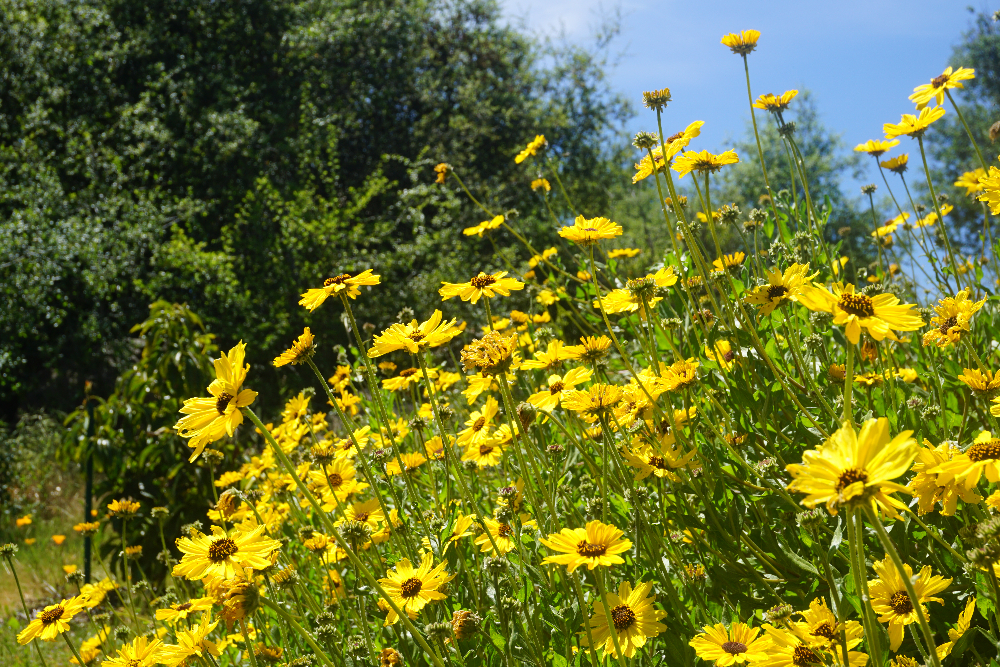
These don’t have to be flowers that you buy and irrigate. The bush sunflowers above I did buy some years back, but they are native plants that have happily reseeded and begun growing elsewhere in my yard, and I’ve never watered them. They grow like weeds, like the poppies shown above next to my Pinkerton avocado tree.
(More on plants for pollinators in my post, “Growing a Bee Garden in Southern California.”)
I also make homes for the native bees that nest in holes by drilling into blocks of wood. (See my post, “Native bee nesting blocks.”) It’s easy to do and it works. Look at the holes below that have been filled with native bee nests:
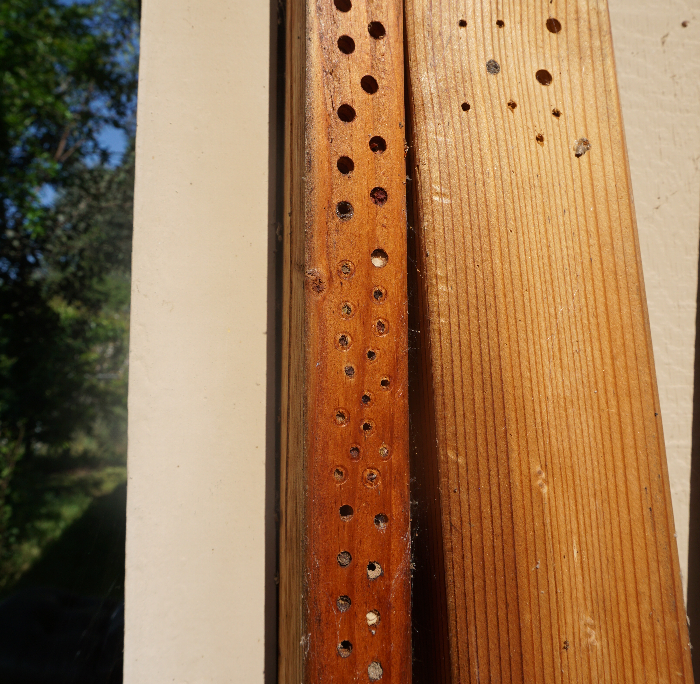
But far and away the most important way to increase pollinators for your avocados (and other food plants) is to provide food for them all year long in the form of flowers.
Then they provide food for you in the form of avocados!
Thanks for your support so I can keep these Yard Posts coming and the ads away.
All of my Yard Posts are listed here.

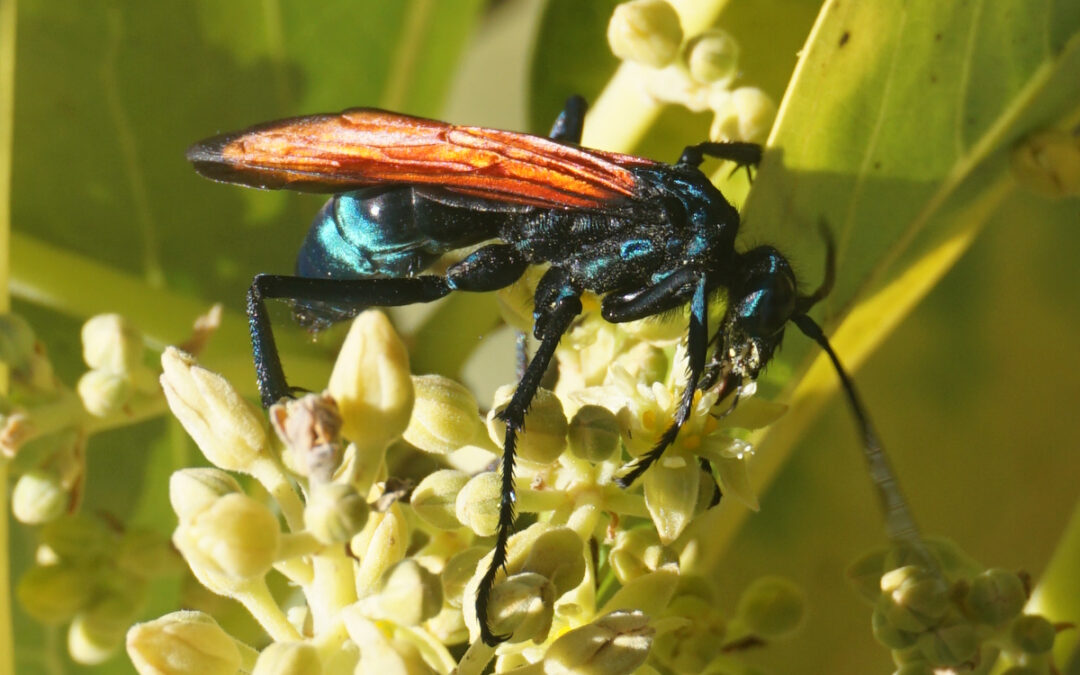


Excellent observations. I constantly battle myths and “But I saw…” in many lectures I give. Butterflies are not great pollinators, long legs/little hair. Moths are excellent, mason bees are better than honey bees but are small in numbers. Syrphid flies do much more work than most people think, most avos (and mango) here (Hawaii) have flies as #1 pollinator, I have several varieties. Female carpenters are common on Passifloras. I have several honey bee colonies, probably the ‘most improved’ pollination I can ID as honey bee driven are my pomegranates.
Retired oil geologist in Houston, lots of fruit trees around the house. Early spring 2023, reading in my driveway many days, 6 avocado varieties and 20 citrus varieties in front of me. Avocado pollinators limited to five varieties of wasps. Bees only in the citrus. 2024 no flowers on the avocados, maybe hurt by that knockout summer we had that also hurt/killed my peach-plum-apple trees.
Thank you for your wonderful post. Very excited to start my avocado planting journey a few years ago, and my journey started with your posts and videos. I am wondering how you feel about avocado self-pollination?
i.e. Avocado flowers self compatible,
In the North California Bay Area, the nighttime temperature rarely breaks 50 degrees during spring. As a result, it is quite common for A-type female flowers to open fully at 2-3PM. (B-type female opens at night, making them useless for pollination purpose)
The messed up flower cycle & other factors might contribute greater success of self pollination. (pollen from the same flower)
Hi Chitong,
The nighttime temperatures in my yard are similarly cold throughout spring. The B-type avocado trees in my yard only have female flowers in the late afternoon during warm spells; otherwise, they may open as female only at night or entirely skip the female phase. (But they still always open as male and are good at providing pollen for the A-type avocado trees nearby.)
I see lots of opportunities for “close-pollination” on A-type avocado trees in my yard. Close-pollination is what they call it when pollen from a male flower on one tree gets moved to a female flower on the same tree. The same term is used when pollen from a male flower on one kind of tree (say, Hass) gets moved to a female flower on another tree of the same kind (Hass).
On A-type avocado trees there is often a period in the middle of the day when a few female flowers are still open and receptive while at the same time a few male flowers have just opened and started releasing pollen. So insects can perform this close-pollination at this time.
So many nectar eaters dining at my avocado “restaurants” but how many “pick up the tab” and carry off some pollen? I saw a bug, maybe an assassin bug, and an alligator lizard lying in wait. So much energy dispensed nearly free for weeks. Over-blooming and giving away nectar, with most flowers and even baby fruits being discarded, what’s the method to the avocado’s reckless profligacy and wastefulness? Whatever the deal, it was worked out before the European honeybee arrived.
I was reading an article out of New Zealand that said that the beetles ate pollen, not nectar, so they only visited the flowers in their male phase, but the nectar eaters, such as bees and butterflies, could visit flowers in both male and female phase, so they are the true pollinators. I wish I had a link on the article, but I thought I would mention it nonetheless.
Very interesting article, and great writing and photography.
Is it good to buy mason and leafcutter bees to help pollination in an avocado grove. I see those bee homes that are available but wonder if it’s a gimmick or if buying them would be helpful. Or is it just best to just plant native plants that attract them and leave them on their own for pollination? Do leafcutter bees even pollinate avocado trees? I’ve read that they are low flying and are better for crops. I’m confused. I’m here in San Diego County. Any advice would be very appreciated! Thank you!